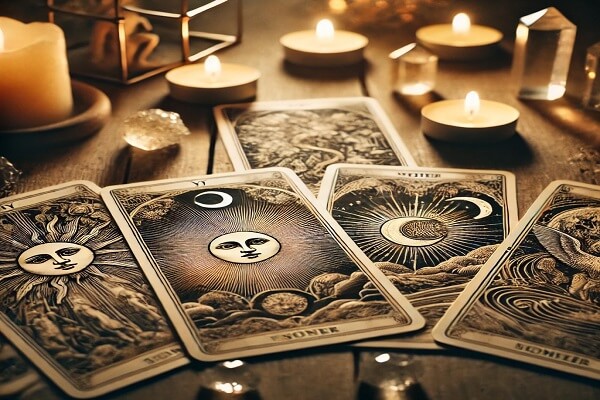The Role of Symbolism in Tarot: Unlocking Hidden Messages

Tarot is a language of symbols, each card brimming with rich imagery and deeper meanings. To the untrained eye, a tarot deck might seem like a collection of pictures. However, these images are a complex system of archetypes, cultural references, and universal truths. Understanding and interpreting these symbols is essential for anyone looking to deepen their tarot practice.
Why Symbolism Matters
Symbols in tarot act as gateways to the subconscious. They bypass our logical mind and speak directly to our deeper selves, triggering intuitive insights and emotional responses. Each symbol on a card, from the sun to a simple cup, carries layers of meaning. When we connect with these symbols, we unlock personal and universal truths.
Common Symbols and Their Meanings
Let’s explore some common symbols found in tarot and their typical interpretations:
- Water: Represents emotions, intuition, and the subconscious. Often seen in the suit of Cups.
- Mountains: Symbolize challenges, obstacles, and the journey toward higher understanding.
- The Sun: A powerful symbol of success, joy, and clarity. It brings light to any situation.
- Animals: Different animals represent various traits. For example, lions symbolize courage, while birds often represent messages or freedom.
- Colors: Each color has its significance. Red denotes passion or conflict, while blue suggests calm and truth.
Interpreting Symbolism in Context
Symbols do not exist in isolation. The meaning of a symbol can change depending on its context within a spread or its relationship to other symbols. For example, the presence of water in The Moon card suggests mystery and uncertainty, while in The Star, it signifies hope and renewal. Understanding this fluidity is key to accurate readings.
Enhancing Symbol Interpretation Skills
To improve your ability to interpret symbols, consider the following practices:
- Study Art and Mythology: Many tarot symbols draw from mythology and classical art. Familiarizing yourself with these can deepen your interpretations.
- Meditate on Individual Cards: Spend time with each card, focusing on its symbols. Let your intuition guide you to new insights.
- Keep a Symbol Journal: Note the symbols you encounter in your readings and what they mean to you personally. Over time, patterns and insights will emerge.
- Explore Different Decks: Each tarot deck has its own artistic style and symbolism. Comparing different decks can expand your understanding of common symbols.
Symbolism and the Querent’s Experience
Every querent brings their unique life experiences to a reading, influencing how symbols resonate with them. A dog in The Fool card might represent loyalty to one person and adventure to another. Engaging the querent in the interpretation process can reveal layers of meaning that a single viewpoint might miss.
Conclusion
Symbolism is the soul of tarot. It allows readers to connect with the cards on a deeper level, transforming a reading into a journey of discovery. By studying and reflecting on tarot symbols, you can unlock the hidden messages they carry and offer more insightful, personalized readings.

